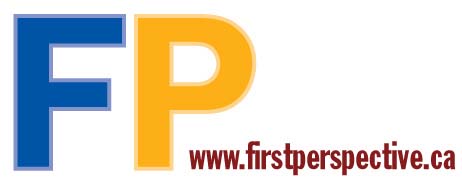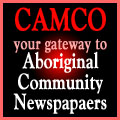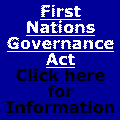

 |
 |
|
Home | Subscribe
| Employment Ads
| Training Ads
| Taiga
|
|

News Briefs Hard Facts Ottawa Watch Editorial What Was Said Commentary Obidiah Arts and Culture Discussion Cartoon Business Politics Arts and Culture Health Environment Pow Wows Education Election Info Sports Youth Womens Interests Other Events Taiga FP Contacts Schoolnet Home Sales Advertising Rates Other Publications   
|
Editorial Fontaine Won Because he had the Better Plan But AFN leader faces a mountain of work to win back relevancy By James Wastasecoot Phil Fontaine is back at the helm of the Assembly of First Nations. To the surprise of many who turned out to witness the event, Matthew Coon Come was dropped from the ballot after a poor showing in the first round of voting. Chief Roberta Jamieson of Six Nations in Ontario came out strong but was edged out by Fontaine's experience and superior politicking. What happened and what lies in the future for First Nations under a return to the Fontaine way of doing things? Fontaine capitalized on what his opponents characterized as his "closeness" to the government by contrasting his approach to the confrontational style of Matthew Coon Come who could point to little in the way of real progress at AFN over the past three years on the issues of most concern to First Nations. Fontaine painted the AFN under Coon Come's tenure as a "protest" organization that has become irrelevant to its members and marginalized in the mainstream political life of Canada. Fontaine got his electorate to think about the consequences and risks associated with protest and confrontation and in doing so, attracted wide support from regional organizations and First Nations whose development plans and lands claims must navigate layers of bureaucracies and government systems to be settled and implemented. Citing specific priorities across the regions he visited in his campaign trail, Fontaine offered an alternative based on a more concerted and conciliatory approach to solving problems and advancing a First Nations agenda under his leadership. Jamieson, a chief of only a year and a half, but possessing an impressive record of administrative and legal experience, surprised many who dismissed her candidacy for National Chief. That she surpassed Matthew Coon Come and garnered forty three percent of the vote in the final run-off against Fontaine, contradicted those who doubted a woman could pose a serious challenge in an environment often characterized as a "male-dominated" world. But in the end, Jamieson failed to clarify exactly how she would go about pursuing her vision of "nation building" and achieve progress on critical issues, while continuing to protest policies she considers harmful to First Nations. Delegates were left to conclude she promised more of the same at the AFN which, clearly, was not what most of them wanted. "You can count on me to be on the Hill opposing the legislative suite," said an unrepentant Jamieson in her closing speech to the Assembly. The election of Fontaine puts the survival of the FNGA on even shakier ground. Fontaine, a known proponent of institutional development at the community level and of the need for greater transparency to citizens, was forced to take a harder position on the FNGA than he had previously in order to counter his opponents' attempts to cast him as a booster of the controversial legislation. "The FNGA would not have happened under my watch," he said to the approval of cheering supporters in his opening speech. Ironically, stripped of the emotional and political baggage which dragged it down, the FNGA had the potential to greatly accelerate the pace of institutional development favoured by Fontaine and other leaders across the country, had it continued. Having denounced the initiative, Fontaine must now follow through and stop the legislation, a not unrealistic feat for a man who has connections at the very top of the governing party of Canada. Fontaine was not yet off the victory podium Wednesday, when he fielded a congratulatory phone call from the Prime Minister. The FNGA still must undergo another consultation phase which may provide an opportunity for both Minister Nault and Fontaine room to manoeuver and reach a compromise solution. Everyone agrees the status quo, the Indian Act, is an unacceptable framework for governance in 2003. Does Bill C-19, due back in parliament in the fall, offer a second track for institutional development for First Nations? Yes, but C-19 will have very limited application as only the most advanced and urban based First Nations will have the capacity to take advantage of the institutions established under the legislation. (See www.fnfi.ca/main.phtml for additional information on C-19.) More importantly, C-19 does not provide for the kind of no-nonsense transparency and accountability framework that FNGA addresses and which a lot of grassroots citizens' groups have demanded and supported. Fontaine was direct and quick to give notice to mainstream governments and business leaders that First Nations must be factored into the decision making processes in the country. "We're back," he said to the cheering audience. "Sometimes we will be at each other's throats. And sometimes we will pull together. But we will always be there," he told government leaders. Then with an edge in his voice, he delivered a sterner message to corporate Canada. "The wealth you enjoy comes from the wealth of our ancestors," he said amidst an approving cheer from the assembled. While Fontaine has achieved some success in advancing First Nation issues in the past, that record has been primarily confined to the federal government. A lot of the obstacles in aboriginal policy arise in provincial quarters where self-government, lands and resources issues are seen as liabilities and not the "opportunities" for action that Fontaine sees in problems. British Columbia, for example, home to many of the First Nations that elected Fontaine, remains a battle ground of provincial and First Nations interests. Fontaine faces a formidable task of bridging and conciliating competing agendas across the country in the next three years. Canadian business and Aboriginal peoples relationships are difficult to measure but one indicator is the employment equity report filed annually by the Canadian Human Rights Commission which notes that in the year 2001: "Overall, Aboriginal people benefited very little from the large number of hiring opportunities [in the private sector] in 2000. Their share of hires increased slightly from 1.5% in 1999 to 1.6%, considerably below the 2.1 Census availability." Clearly Fontaine has his work cut out if he is to get his "share the wealth" message out to Canadian business.
|
|
Home | Employment Ads | Training Ads | Contact Us | Taiga | Web Designer |